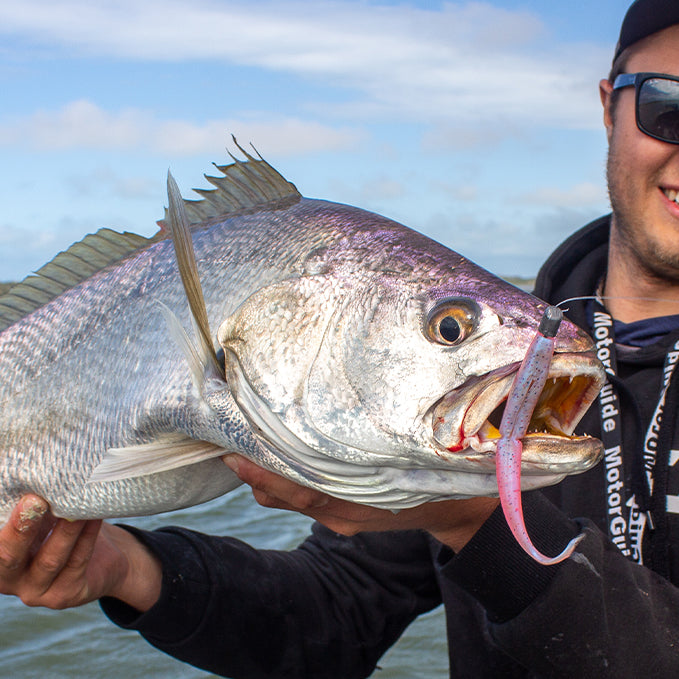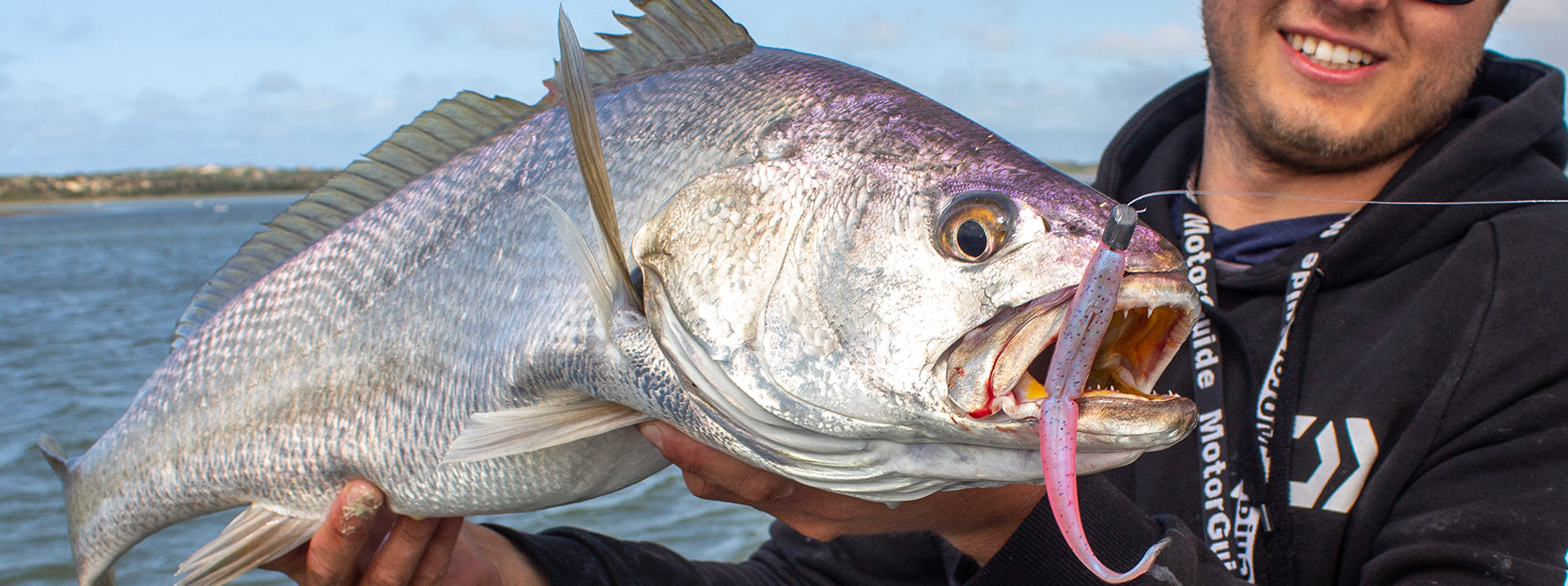Posted 26th April 2024
How to Catch Mulloway on Lures


Joshua Davey
When you think of iconic fish species in Australia, mullloway or jewfish as they are known around some parts of the country have to be up there as one of the most highly regarded and prized sports fish we are blessed to have gracing our shorelines. Best of all, they are very accessible, occupying a variety of locations from estuaries, to bays, to surf beaches and even sometimes offshore. However this by no means makes them an easy target, deservingly earning trademark nicknames such as ‘the silver ghost’ or ‘the fish of a thousand casts’. In this blog, I aim to break down how I like to target these extraordinary fish in the estuary, so that you too can go out and get a hold of one of these incredible fish.
Tackle
I will preface this paragraph by saying that tackle choice is purely subjective to 1: the size of the fish you are targeting and 2: the area you are targeting them. To put this into context, the area I chase mulloway is dominated by small “soapy/school” sized fish, with fish around a meter considered quite large. This is in addition to it being in a very forgiving area, with minimal structure apart from the odd coral bommie. Basically that means I have the luxury of fishing light and often take out three separate outfits to reflect the size of the fish I’m chasing. The first is a TD Zero 742LXS 2-5kg paired with a 2500 sized Freams spooled with 10lb J-Braid Expedition and a 20lb J-Thread FC leader. Next I run a TD Tierra combo, consisting of the 701MFS paired with a 3000 size Tierra reel spooled with 15lb J-Braid Grand and a 25lb Saltiga X-Link FC leader. Finally is my heavier setup, which is a TD Black ‘Macka’ 701MFS 5-8kg paired with a KIX 4000 spooled with 20lb J-Braid Grand and a 30lb J-Thread FC leader.

Lures
Personally, when it comes to lure selection I am a huge fan of soft plastics for where I fish. They are incredibly versatile and are available in such a diverse range of colours, shapes and styles. For a number of people, paddle tails are king and I am probably putting myself in danger of being made an outcast for this statement but I think I disagree. Look, up until fairly recently I would have been reaching for a paddle tail before anything, but since the inception of the Bait Junkie Jerk Shads I have struggled to go past them. With their skinny waist profile, they create a swimming action unmatched by other “fluke” style soft plastics. I fish both the 5” and 7” models, don’t be fooled because elephants definitely do still eat peanuts with some of my best fish caught on the 5” plastic. I must say however, the 4.2” Minnow still without a doubt has a place in my tackle box and has accounted for some exceptional fish, particularly at night. That big boot tail swims so aggressively that I can even feel it through my rod tip, which can be a god send for alerting hungry mulloway to the presence of your lure. I match my soft plastics to a variety of jig head sizes, typically fishing as light as possible for my conditions. For the most part I fish the 5” model on a ¼oz 5/0, the 7” on a 1/2oz 7/0 and the 4.2” paddle tail on a 3/8oz 5/0 Bait Junkie jig head. More recently I have even been experimenting with the Steez Soft Shell 90, which has been the secret to raising a bit out of shut down fish.
Approach
So we have broken down my favourite tackle and lures to target the elusive mulloway, but now how do we do it? Well unfortunately, as every seasoned mulloway angler will tell you. The number one ingredient to the mulloway recipe is time, so please don’t be disheartened if you head out full of spirit after reading this article only to raise the dreaded ‘donut’. I spend a lot of time chasing these fish out of my boat, with the majority of that time spent staring at my sounder screen appearing to drive aimlessly around my local estuary. The truth is I just cover lots of ground in likely area looking for schools of mulloway on my sidescan, rarely making a cast unless I see sign. Sure sounds easy right? But what are the “likely area” I am looking for? People often associate mulloway with being lazy, sitting out of the current and waiting for food to come to them. This couldn’t be further from the truth, they are highly specialised and efficient hunters that can move exceptionally fast when they need to. Because of this I used Google Earth to find “choke points” and areas which bait have to push through. Think along the lines of drop offs from intertidal sand flats, narrowing of river channels and current breaks. Lower tides I focus my attention in deeper sections, rising tides I sometimes even push onto the flats, but as I previously alluded to, it’s a lot of looking around for not a lot of casting.
Ok I found some likely areas, now what? Well I work my lures very simply, letting them sink to the bottom, with a standard ‘double hop’ retrieve. Making sure that my lure comes in contact with the bottom for at least a few seconds before twitching it again. It can be amazing how long a lure can be sitting on the bottom before a fish decides to eat it! Sometimes the hit can be teeny tiny, other times they can damn near rip your arms out of their sockets! But regardless, take the wise words of Daiwa Pro, Sam Gilchrist into consideration. Set that hook hard and treat them with nothing but disrespect! I say that in jest, as these are truly special fish and in actual fact deserve nothing but our full respect.
I hope this article shed some light on successfully targeting these magic fish and inspires you to get out there and throw some Bait Junkies around!
















